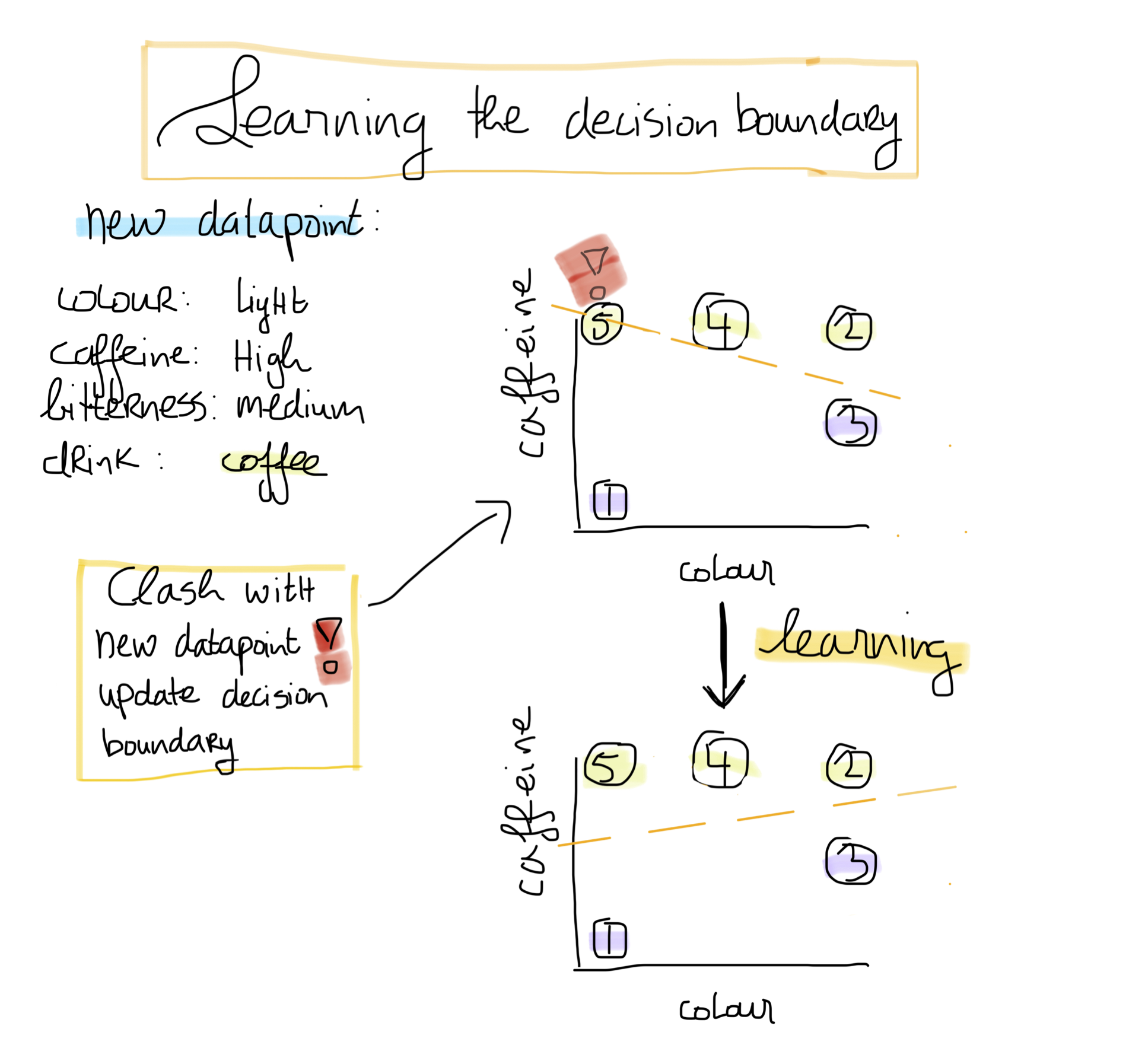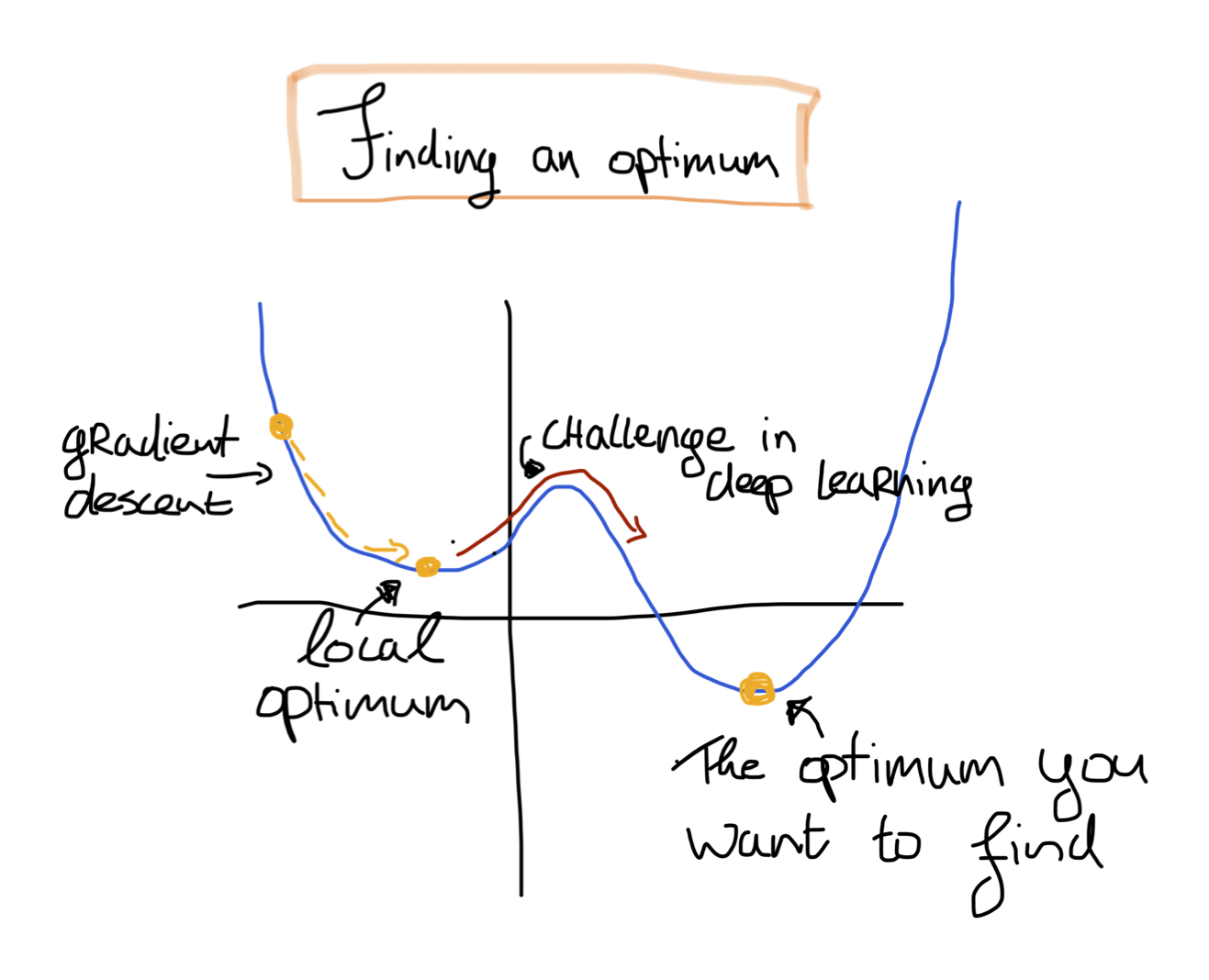AI: Learning the Decision Boundary
Instead of using regular statistics to detect the decision boundary, we can try to learn the function iteratively. This is where neural networks come in handy. By using deep neural networks, we are repeating our statistical analysis iteratively depending on our data.
For example, suppose we have a coffee which is medium bitter and has a lighter colour. When the function is learning, it might misclassify this coffee as tea. Based on this new datapoint, we have to correct the decision boundary. This process - called gradient descent - is repeated many times, until the most optimum decision boundary is found. This means that most datapoints are classified correctly.

Finding a deep neural network with the best decision boundary is therefore an optimisation problem. This can be calculated mathematically (from high school mathematics, you might recall finding global and local minima/maxima using the derivatives). However, it can be the case that there exist multiple minima. Finding the global minimum is one of the challenges in learning such a function.

Keywords
- Neural network - a technique inspired on the human brain designed for finding patterns in data
- Gradient descent - a technique for finding the optimum of a function interatively
- Optimisation problem - the problem of finding the best solution from all feasible solutions